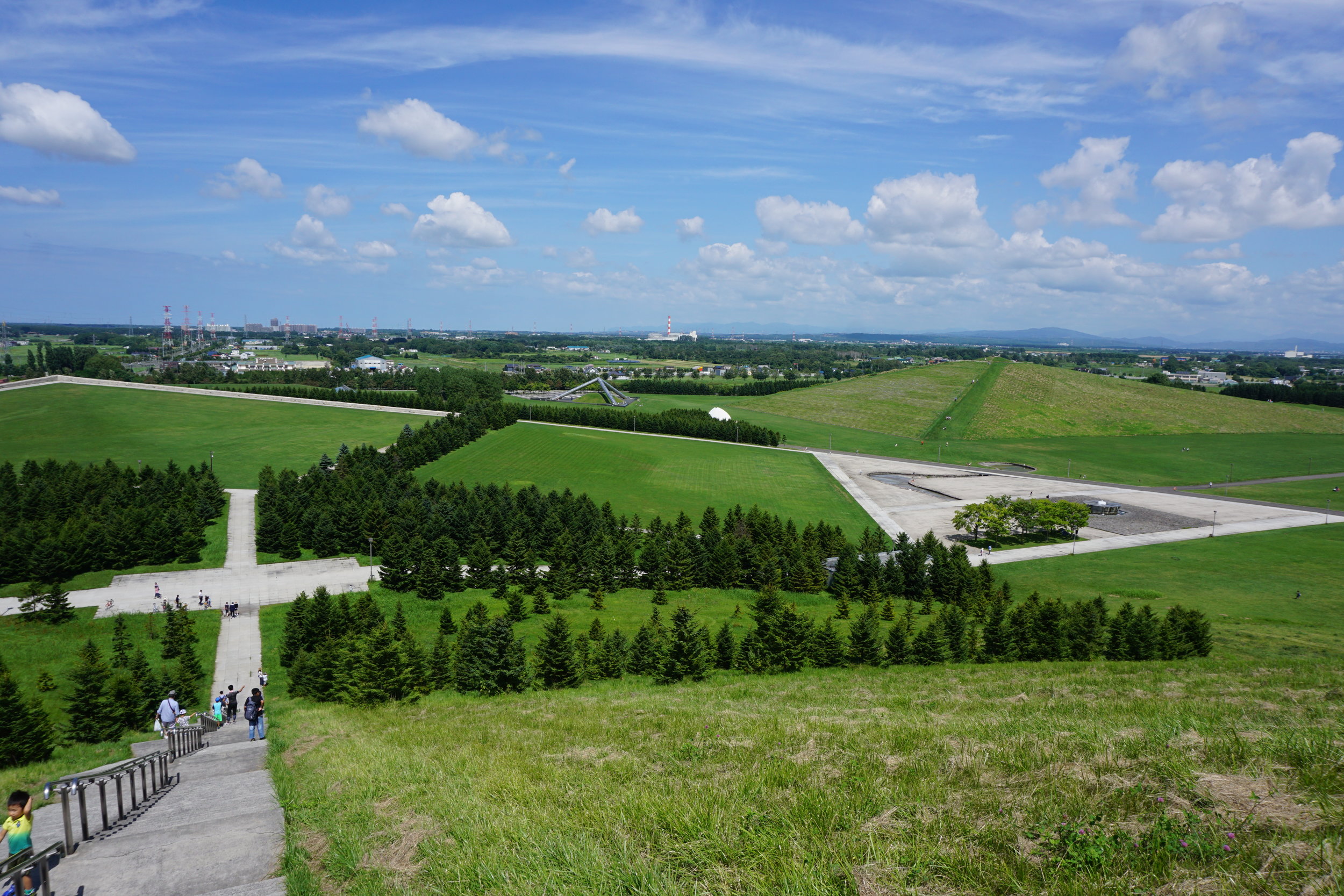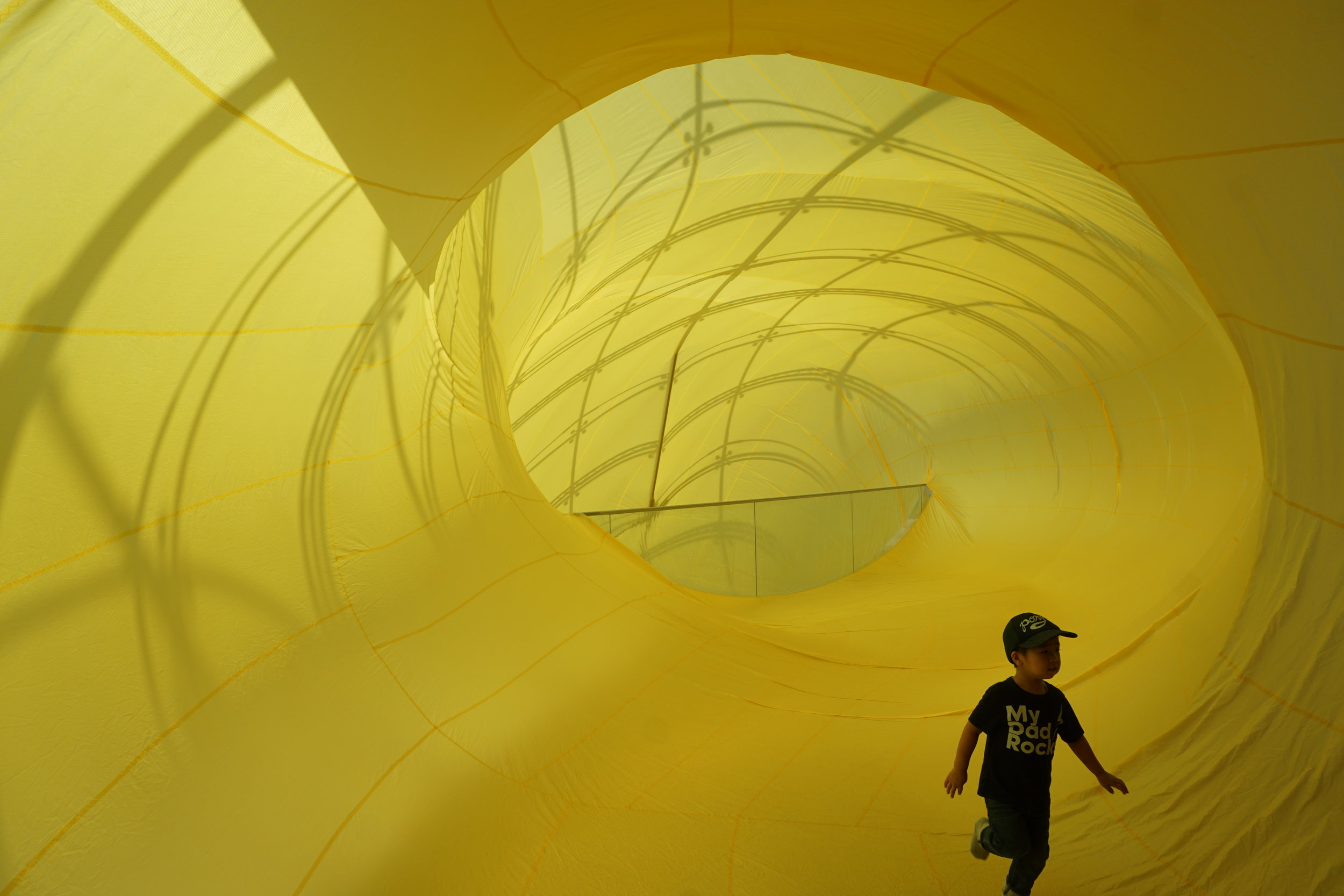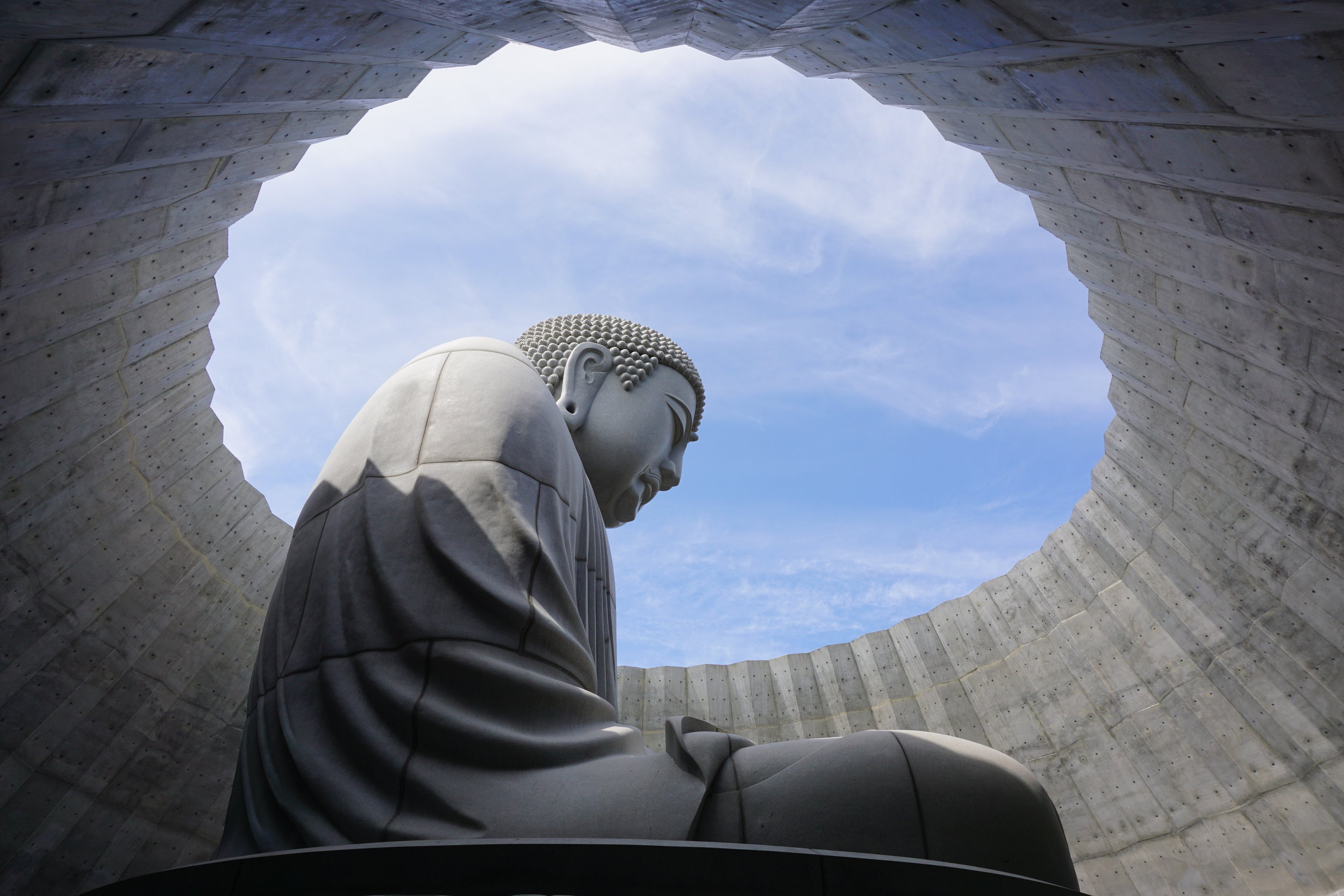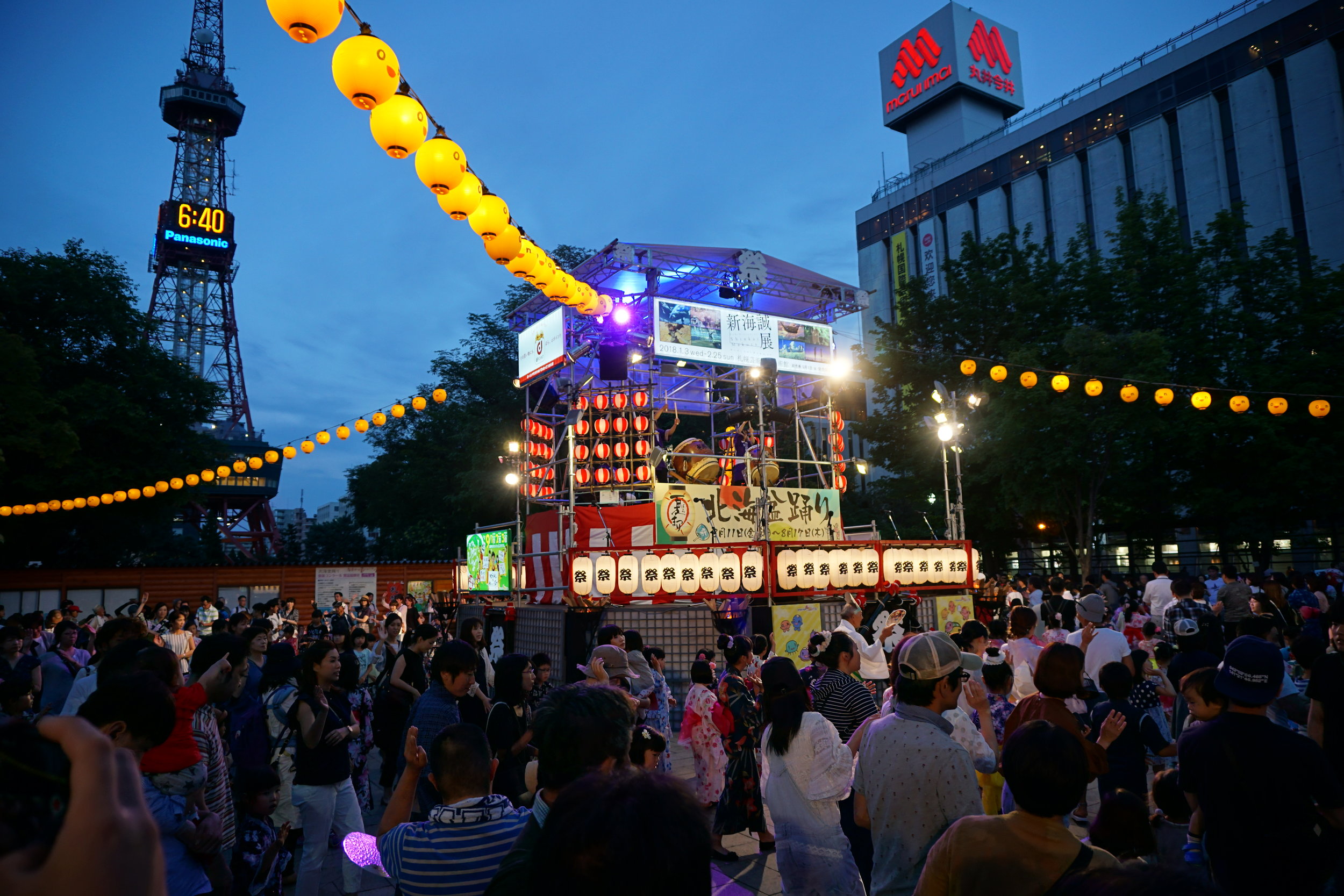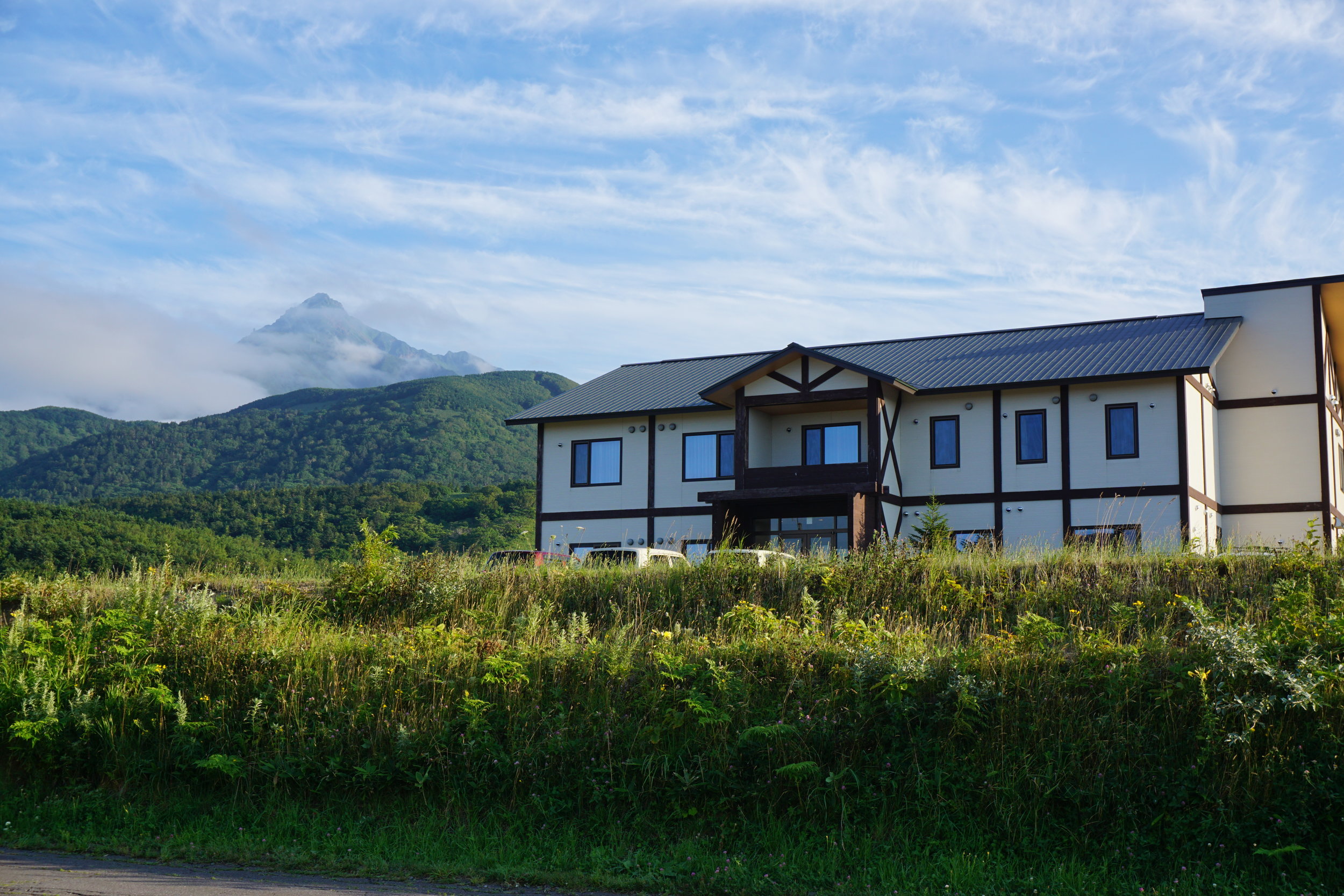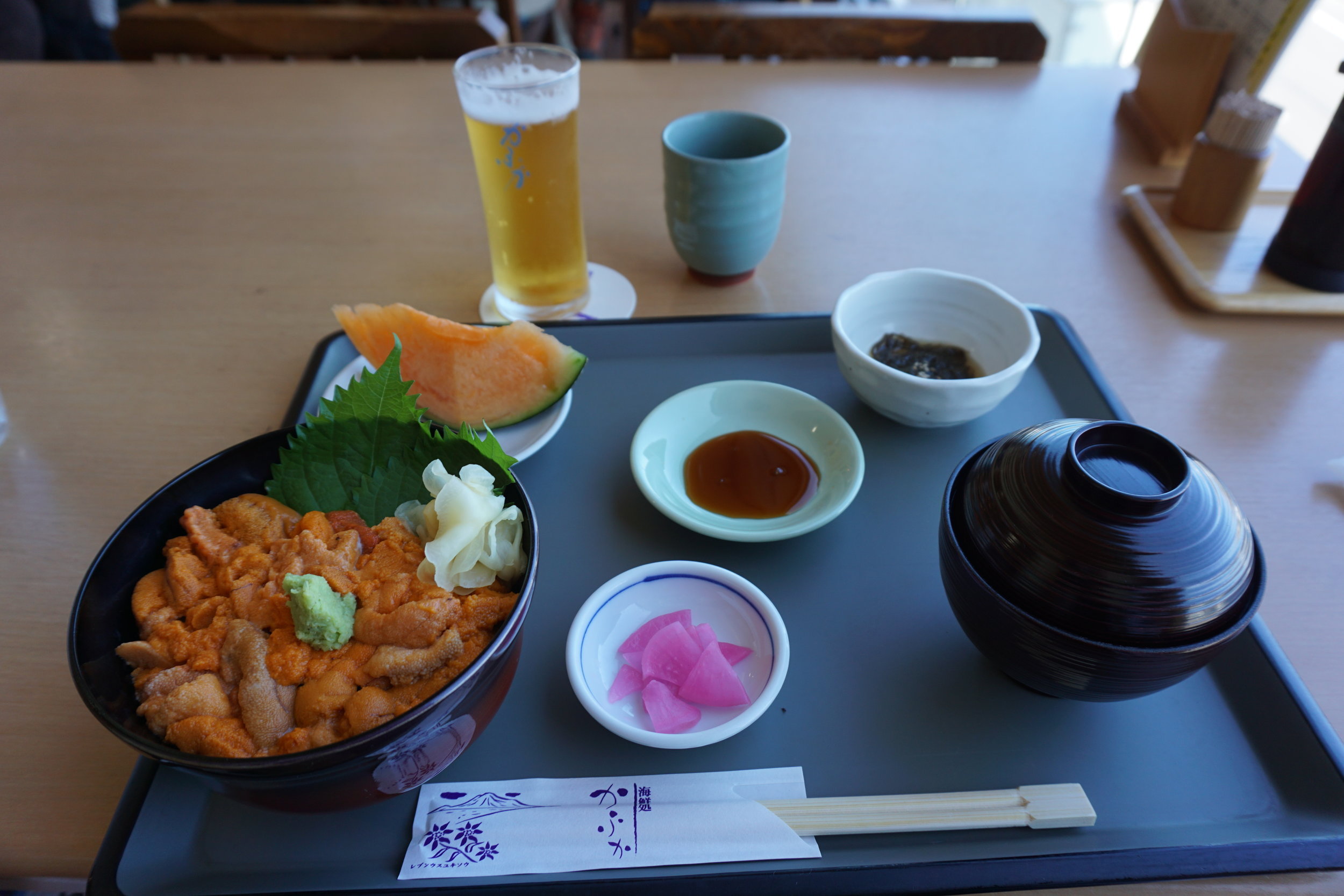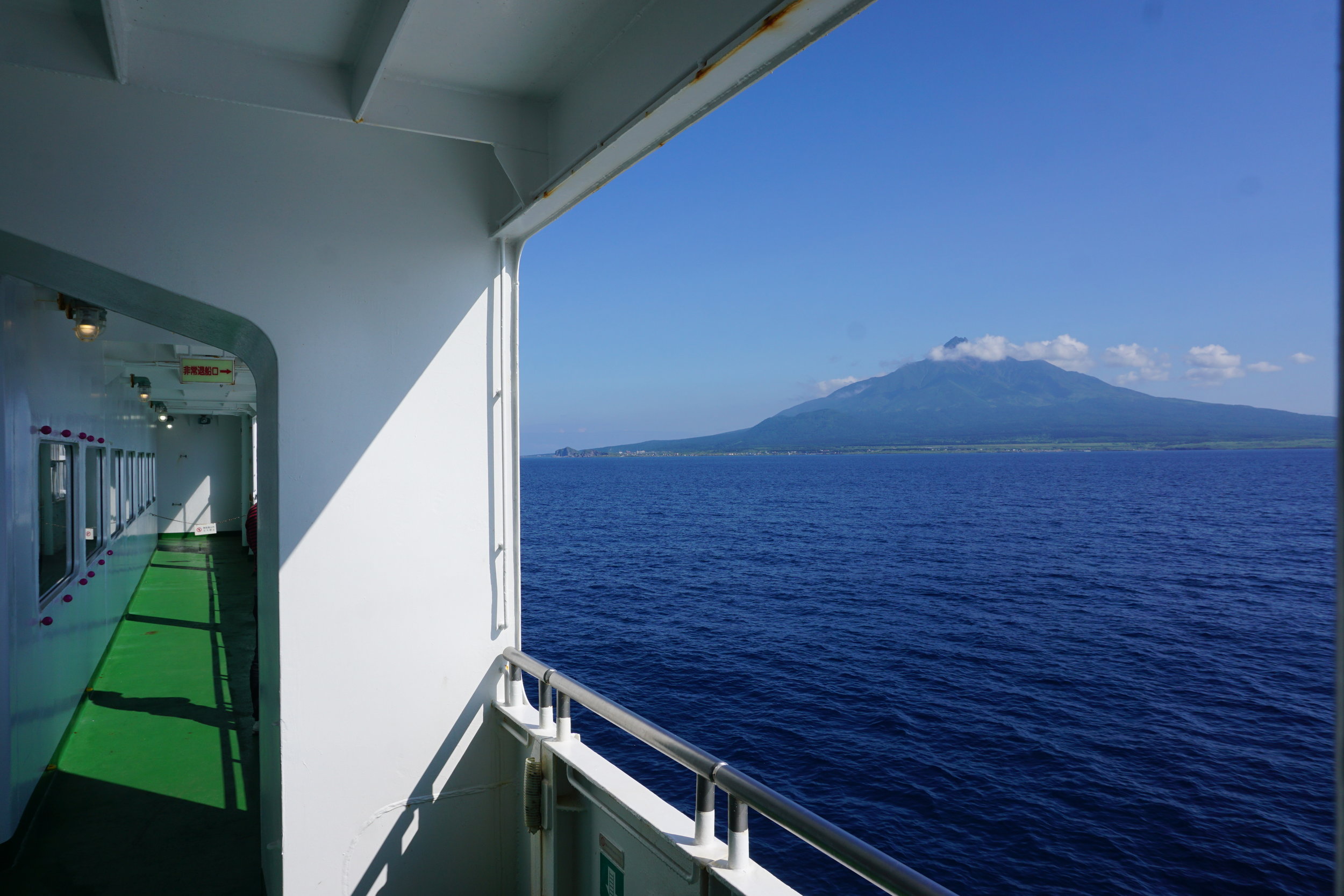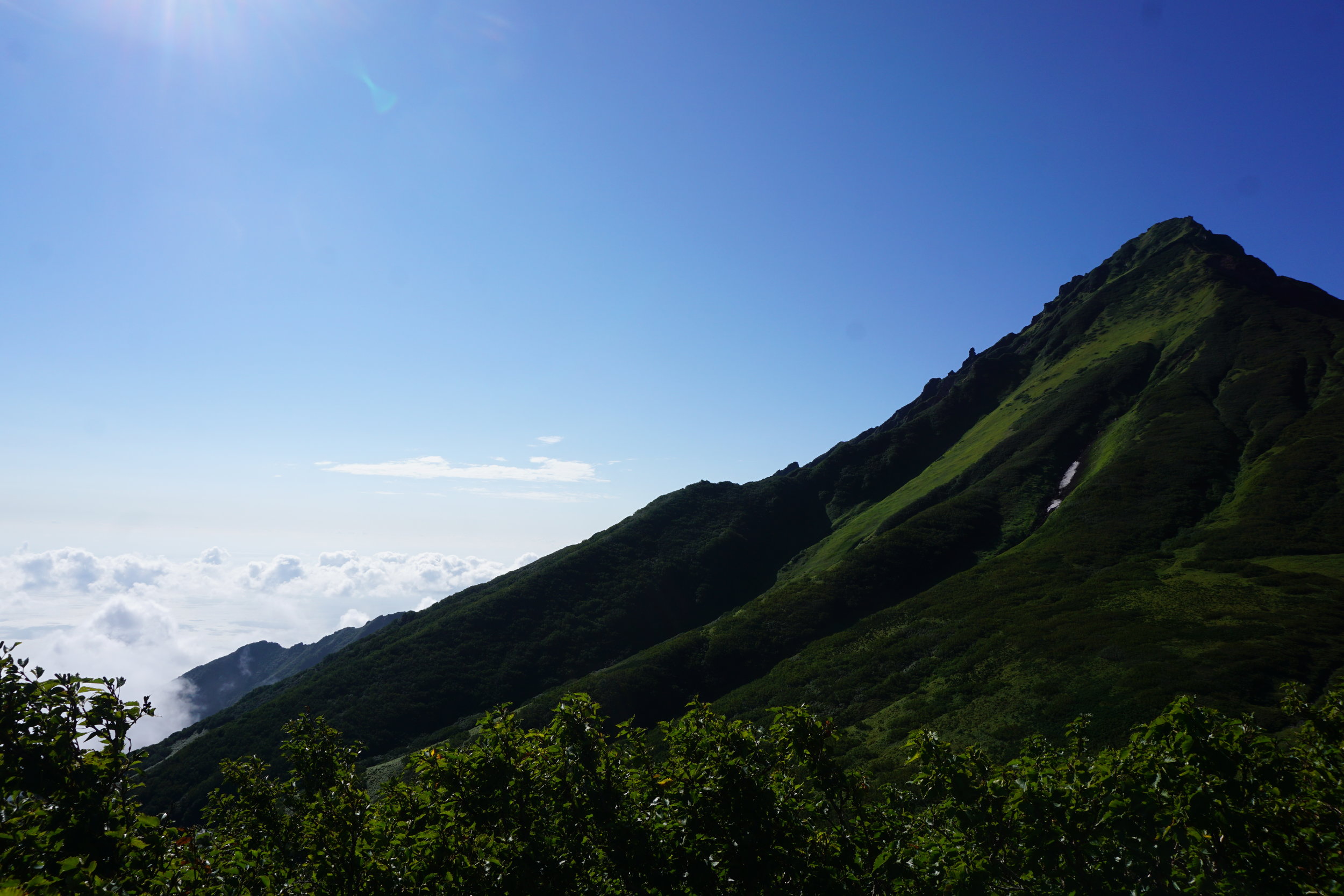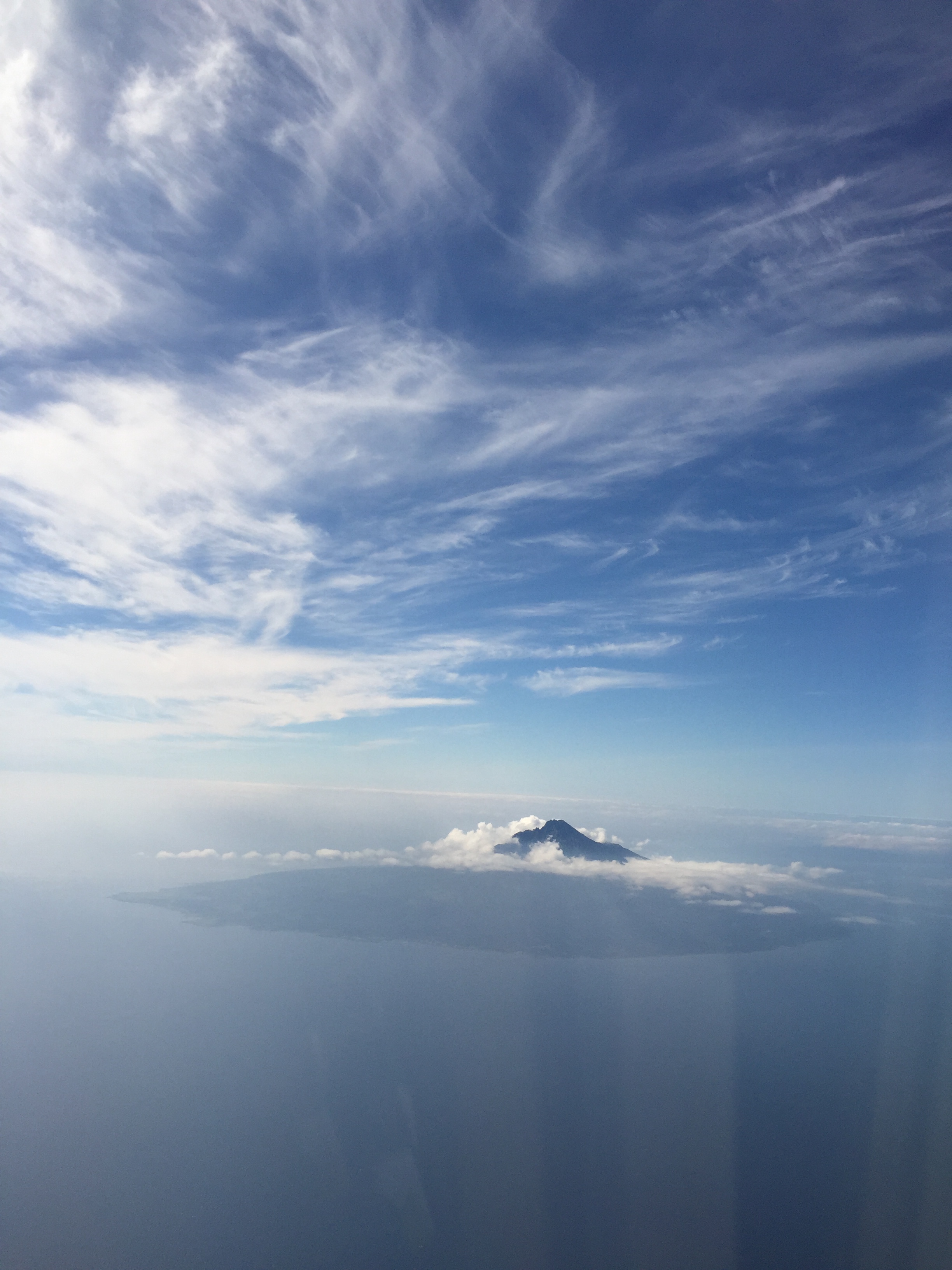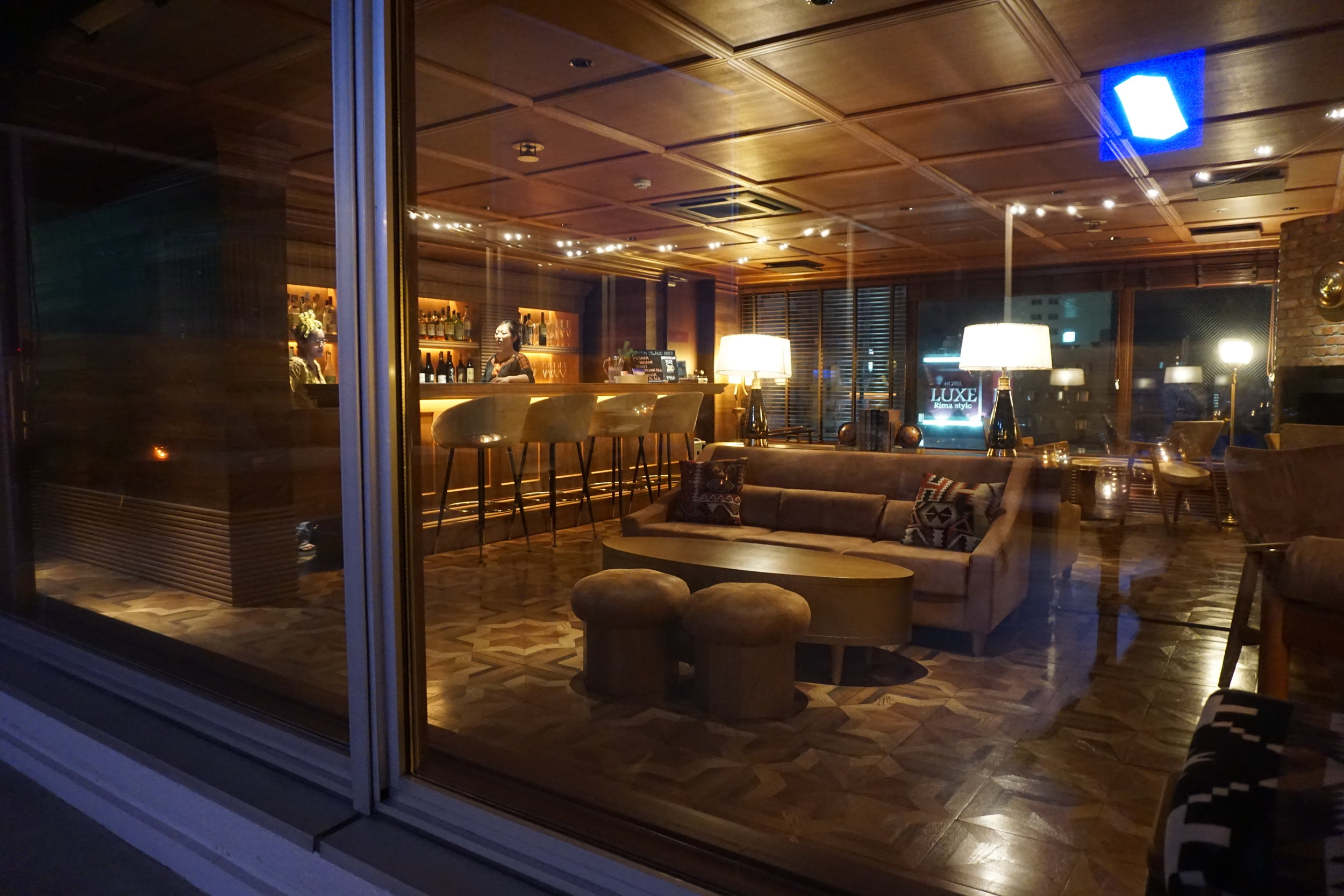For those that wither in the heat and humidity that is the majority of Japan in the summer months, there is an antidote. And it is only, a short, 1.5 hour flight from Tokyo. Hokkaido, full of verdant green meadows, cool breezes and the best darn seafood, is a respite from the humidity and a playground for adults and children alike.
Previously, I'd always associated Hokkaido with snow sports and spirits, like whiskey and beer. I thought of it more as a winter destination than summer. But I've learned, Hokkaido in the summer means national parks, beer gardens, jazz, and art—all worthwhile draws, with the added benefit of a respite from the heat.
This summer Be Here visited Sapporo before flying up to Rishiri and Rebun, two small islands off the northernmost tip of Hokkaido. Rishiri and Rebun really stole the show as did the Sapporo International Art Festival. Below are some of the highlights for your own adventuring.
Rishiri
A mountain of an island with a heart of gold.
There is something extremely special about Rishiri, it's incredibly remote, the farthest north you can get in Japan. The topography of the island is dominated by Mt Rishiri (1700m), a perfect volcano that is famous for it's resemblance to Mt Fuji.
While Ainu had lived on the island previously, it wasn't populated by the Japanese till the Meiji Era (1848) when the Emperor sent groups of soldier/farmers to Hokkaido to defend the land from foreign invasion. Despite it's origin story, the island couldn't feel more peaceful and really stands out to me as a power spot. In Japan, the concept of “power spot” means a particularly charged parcel of land where someone can go to recharge their energy and receive extra luck. A lot of times power spots are related to a Shinto shrines (Shinto was Japan's official religion till 1945) or connected to particular deities. Rishiri is not an “official” power spot, but it sure felt like one to me. I left the island feeling sparkly, like I had just sat and meditated for days. The greens were greener, the blues, bluer and my idea for what is possible in the world, expanded. I had also soaked in beautiful baths, climbed to the top of a famous mountain, hiked through wild flowers and ate mounds of fresh uni - so that may also have had something to do with it.
When to visit:
You can visit Rishiri in any season. Summer months draw hikers and flower enthusiasts while in the winter you'll find backcountry skiers and really brave cold water surfers.
How to get there:
It's an easy flight from Sapporo (37 minutes). Both JAL and ANA operate flights a couple times a day. You can also take the ferry from Wakkanai (less than two hours). The ferry timetable changes depending on the season, so be sure to cross check your dates and double check with port you are going to - there are two ferry ports on Rishiri (Oshidomari and Kutsugata).
Where to stay:
Rera Mosir is far and away the best place to stay on Rishiri, mostly because of it's proprietor, Toshiya Watanabe. Watanabe San is a renaissance man and can do everything from take you ice climbing up Mt Rishiri to prepare award winning uni bento (sea urchin lunch box). The pension has both Western and Japanese rooms with in-room showers. But I never used the shower in my room because the shared outdoor bath is so lovely and overlooks the mountain. The food is delicious, a multi-course menu featuring local specialities is served at night and in the morning there is a buffet with homemade croissants. The website is all in Japanese, but they are very accommodating for non-Japanese guests, email your request and they will reply in English.
Watanabe San is a guide on the island, so you can also book your experiences with him.
What to do:
Rishiri is an outdoor enthusiast's paradise. I recommend teaming up with an experienced guide (like Watanabe San) for kayaking, fishing, hiking, surfing, etc. Or, if you want to explore on your own, a great self-guided experience is bicycling around the island via the cycling road. It's completely separate from cars and takes you around about 1/2 of the island. You can rent bicycles at most pensions and at the ferry terminal.
For those planning to climb Mt Rishiri, a few things to note:
- Bring plenty of water (2 liters or more). There are no springs on the mountain, so you'll need to carry all your water with you for the day
- You must pack out human waste. There are toilet stalls at different stations along the mountain. The stalls have little seats inside that you put human waste bags over before using. You can buy the bags at any of the convenience stores on the island. It's an amazing invention and makes using the toilet in the woods feel sanitary, safe and not smelly. Bring two bags per person for a day-hike.
- As the trail can be slippery, it is helpful to use hiking poles.
- Depending on your hiking speed it can take anywhere from 6 - 12 hours to summit and return to the trail head.
Where to get a good cup of coffee:
- Tsuki Cafe - located upstairs in the ferry terminal - from your seat you can see both the ferry boats coming and going as well as the clouds floating past the peak of Mt Rishiri. Besides the view they have a tasty cup of coffee and delicious sweets.
Rishiri initially landed on my list of places to visit in Japan after reading Kyūya Fukada's 100 Mountains of Japan, Mt Rishiriis the northernmost mountain on his list. Definitely recommend as an inspirational read before your travels!
Rebun
Rebun was so scenic I can see it becoming an outdoor destination in the same way of Iceland (minus the glaciers). It is rugged and beautiful, with dramatic cliffs, rolling hills, isolation. I took more photos there that could also be used as Microsoft desktop backgrounds than anywhere else in the world.
An easy day trip, Rebun is a 40 minute ferry ride from Rishiri. In the summer it is full of wild flowers and is famous for its hiking courses which range from four to eight hours long.
If you are coming over for a day trip from Rishiri, you’ll only be able to do the southern, wildflower course by foot. It's estimated to take about four hour, but I was able to do it in two.
If you would like to explore farther afield, you'll either need to rent a car or stay overnight. The timing just doesn't work to be able to ferry over from Rishiri, bus to the northernmost tip of the island (takes one hour), hike the eight hour course and then ferry back - the last ferry back to Rishiri in the summer is 16:25 and you wouldn't be able to make it back in time.
**Be sure to double check the ferry timetable, the schedule changes seasonally.
Sapporo
This is my third time visiting Sapporo - first time in the summer season. Charming as ever. All the white snow has been replaced with blooming wildflowers. Odori Park, like in the winter, is the cultural heart of the city, full of summer beer gardens, matsuri dancing and picnickers.
Sapporo International Art Festival
The main motivation for revisiting Sapporo this summer was to experience the Sapporo International Art Festival which is running for the second time since the inaugural festival in 2014 . Installations can be found in over 60 locations around the city, featuring both domestic and international artists across a range of mediums. Two of my favorite installations were "climbing time / falling time" by Matsui Shiro and "dot kai dot (DKD)" by EYƎ.
The Festival is going on from August 6th - October 1st, 2017, so you still have time to catch it. Luckily many of the exhibition spaces also have permanent exhibits, so if you find yourself in Sapporo after the festival is over, you can still visit them.
Two days wasn't enough to see everything, not even close. It was helpful to have a car to be able to move between exhibitions. The car isn't completely necessary because the city also provides a free shuttle bus between some of the exhibitions. Don't know if they are planning to turn this into a triennial, but after my experience this year, I would definitely be interested in going back again.
Sapporo Recommendations
Found a few new go-to's that I will definitely be revisiting the next time I find myself in Sapporo.
New Favorite Place to Stay
Unwind Hotel
A conceptual mixture of mountain lodge and hotel, the rooftop bar has an open fire pit and breakfast is brought to you in a thermos, to be enjoyed in bed!
New Favorite Places to Visit
Brainchild of sculptor Isamu Noguchi - his designs transformed a previous dump into a paradise. Rent a cycle and explore - it is so inspiring.
Tadao Ando created a beautiful Buddha statue for the Makomanai Takino Cemetery, just north of Sapporo. It's uniquely position, mostly buried underground, creates a very different viewing experience. The Cemetery also has an collection of curious sculptural replicas that are worth viewing.
*Having this sculpture in a cemetery means that guests need to be extra respectful while visiting, some of the other people there will be paying respects to loved ones that have passed on.
Amazing night view out over Sapporo, you can almost see all the way to Otaru (sushi heaven). There is also a theater at the summit where you can learn a bit more about the universe . Shows last for twenty minutes and are in Japanese.
All these recommendations and more are included in the Google map below. I recommend adding it as a layer on your Google Maps app, that way you can quickly see what is close by when you are out and about exploring.
Winter Adventure Sports Trip
I’ve been meditation on the idea of an adventure sports trip back to Hokkaido for Winter 2018. Three distinct places come to mind on the itinerary:
- Rishiri - backcountry skiing
- Utoro - swimming in drift ice and snow shoeing
- Niseko - skiing and onsen (with an Australian flare)
If these sound interesting to you, let me know, and I will keep you posted as plans come together.


